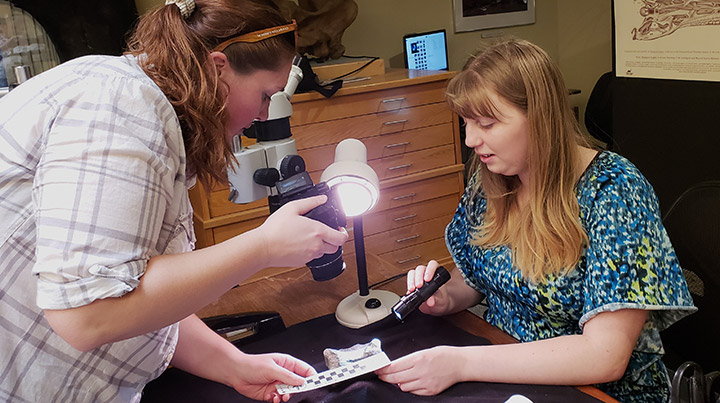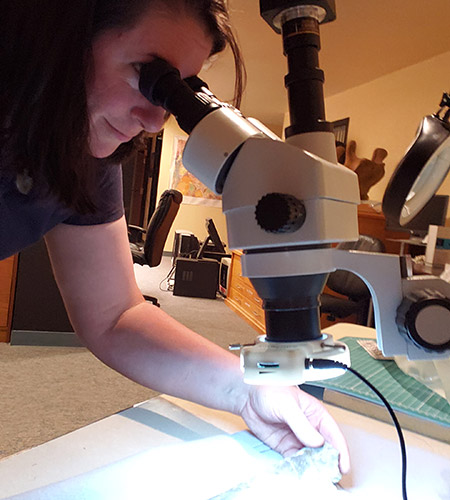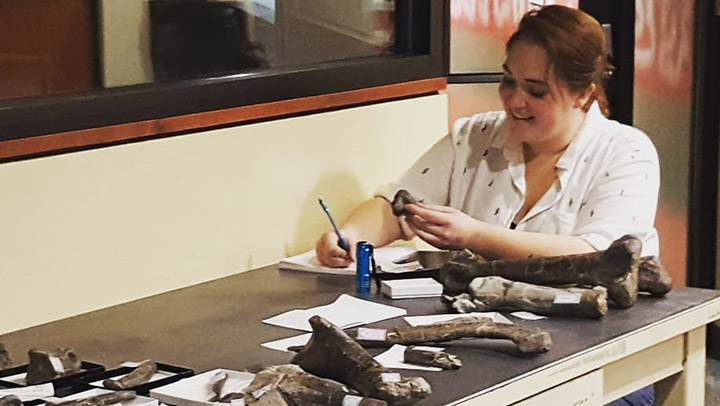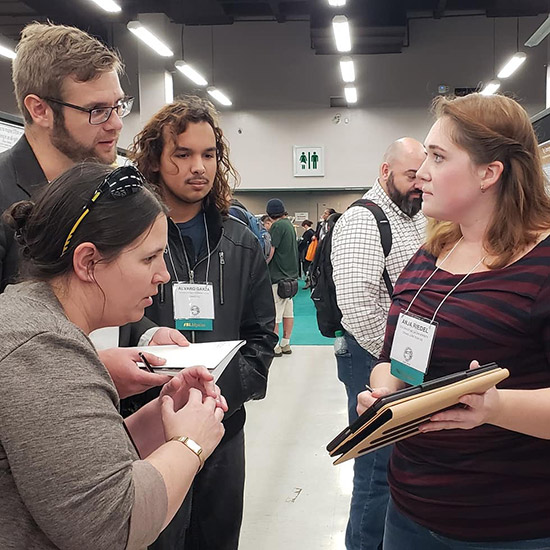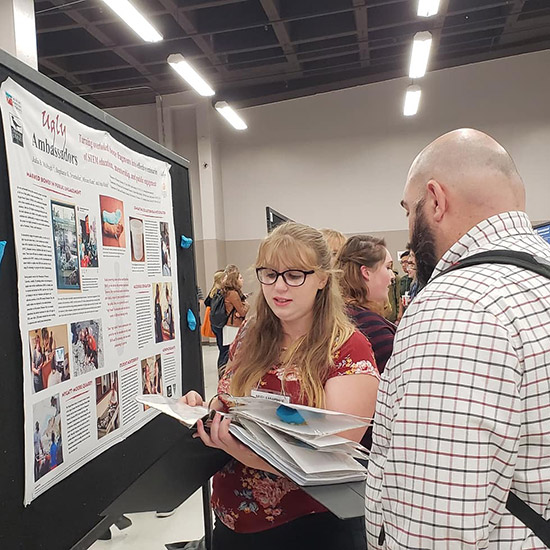CMU collaborative research discovers evidence of cannibalism in Allosaurus during the late Jurassic
After more than two years of research and surveying 2,368 fossils a group of researchers have found a high frequency of carnivorous dinosaur bite marks on carnivorous dinosaur fossils, which provides evidence of feeding, scavenging and possible cannibalism. This research was recently published in the PLOS One journal.
CMU Geosciences Lecturer and Curator of Paleontology at the Museums of Western Colorado Julia McHugh, PhD, said there were two really unexpected and awesome takeaways from the research conducted at the western Colorado Mygatt-Moore quarry.
“The first is this is the first possible evidence of cannibalism in Allosaurus, a large predatory dinosaur, in the late Jurassic period of North America,” said McHugh. “The other thing we found that was unexpected was just how many bite marks there were on the fossils. Probably about 30% of bones had bite marks on them compared to other quarries that maybe have 1%-2% of bones with bite marks.”
McHugh worked on the collaborative project with University of Tennessee, Knoxville Paleontologist and lead author Stephanie Drumheller, PhD, and Daemen College Professor Domenic D’Amore, PhD. Two CMU geology majors, Anja Riedel and Miriam Kane, also contributed to the research project as research assistants.
“We could not have come close to collecting all of the data we did without our CMU students,” McHugh said. “Together they surveyed 800 fossils for bites and other marks, measured them, recorded data and 3D modeled exemplar specimens for use in education and outreach.”
Riedel and Kane not only got their hands dirty in the field but also assisted in presenting the group's findings at an international scientific conference and at outreach events.
“The hours I spent cataloging bone surface modifications on bones from the Mygatt-Moore Quarry were fascinating and educational,” said Riedel. “The crowning moment of the entire internship was presenting research at the Society of Vertebrate Paleontology Conference where I was able to communicate with leading scientists about all of my work from the previous nine months. I was over the moon to be in a professional setting talking science with a group of the smartest people I've ever had the pleasure of meeting.”
McHugh learned they received the grant for this work on December 26, 2017. They started work in the quarry in March 2018 and did earnest collections for prowling marks through March 2019. In the fall of 2019 they presented initial findings at conferences and continued to collect and analyze data. At the end of 2019 and beginning of 2020 the writing process started. The first peer-reviewed article debuted in PLOS One on May 27. The next peer-reviewed article will be published in Peer J within the coming weeks and a third article is still to be written.
Next steps for this research include conducting a study at other fossil sites to see if the high percentage of bite marks really is an anomaly to the Mygatt-Moore quarry fossils. Next steps for Riedel and Kane could be graduate school.
“My proud professor moment is having them present and have their work published,” McHugh said. “My goal now is to help them get into awesome graduate schools.”

